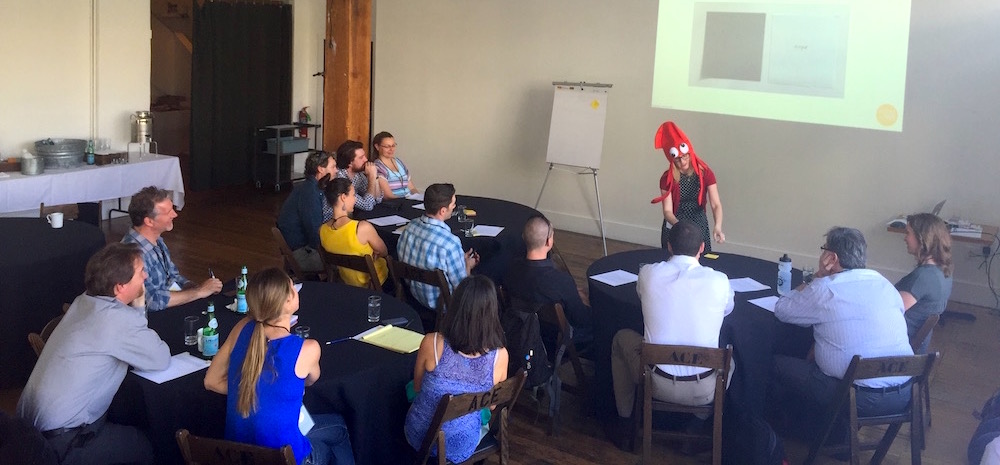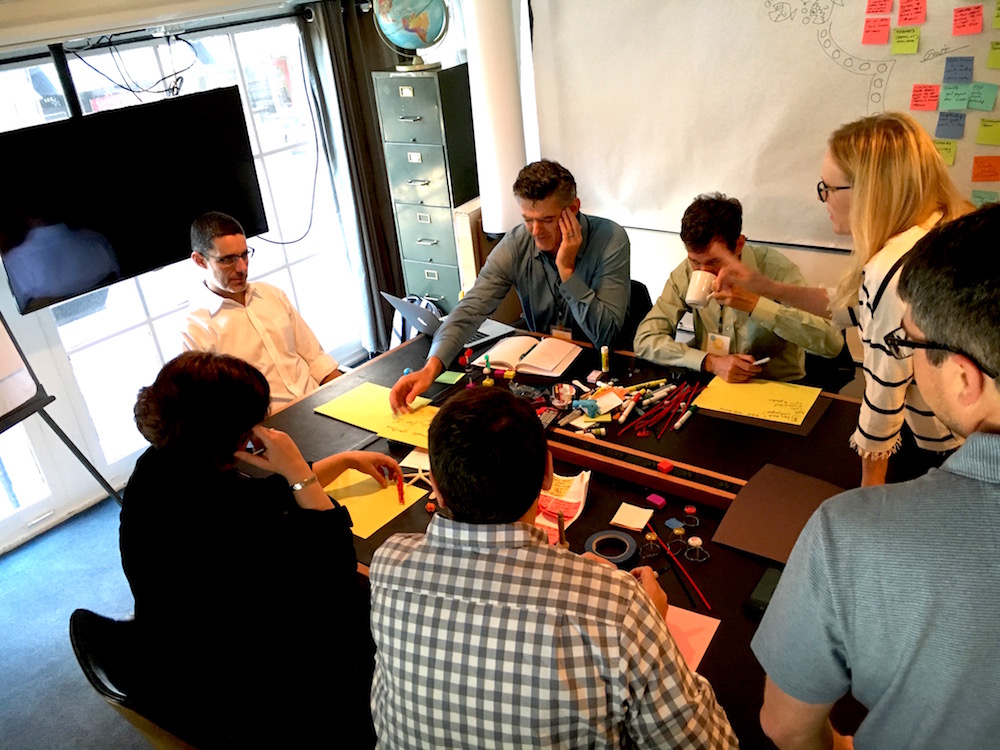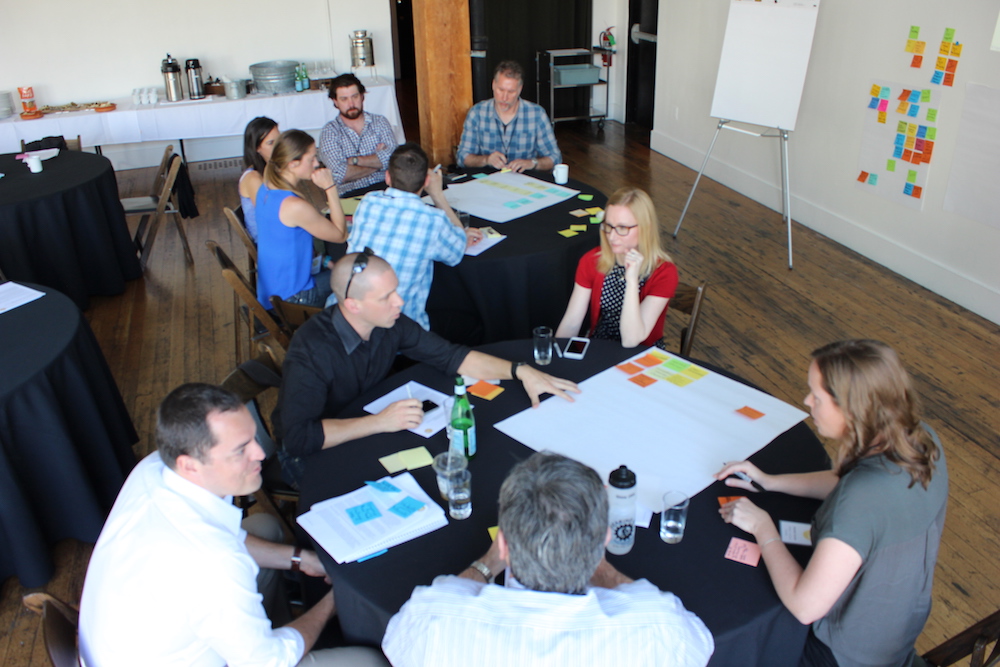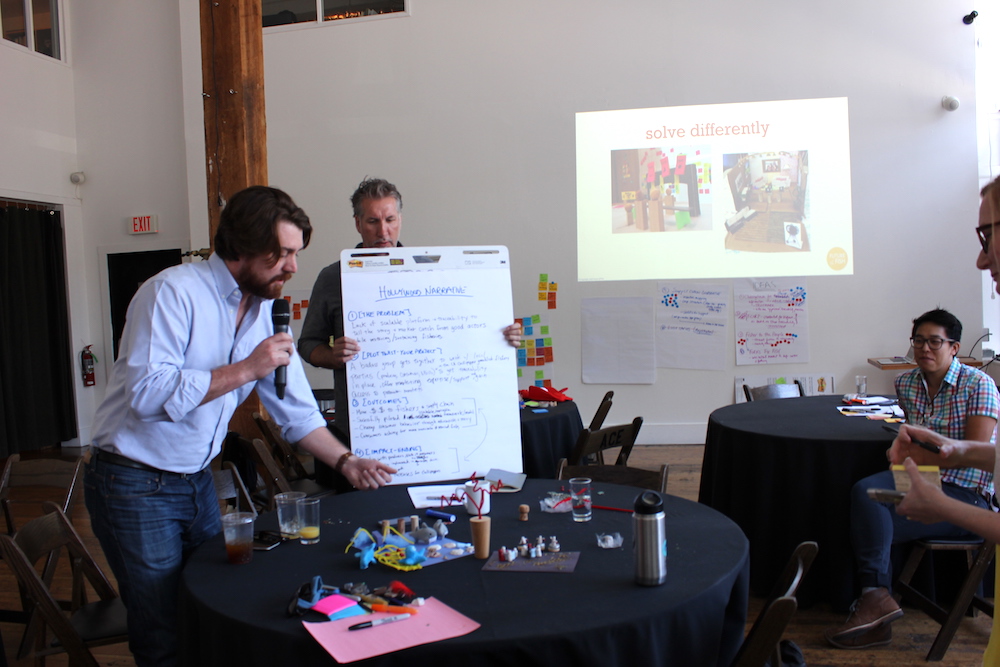
When we left off, our teams had just finished presenting ideas, building prototypes, and acting out a version of the world in which their ideas come to life. But it still felt hypothetical. The re-convening—as designed by our for-profit partner Flip Labs is when we nail down real, actionable next steps. It’s here that we begin to strategize about funding, and start the critical transition from “teams” to “Pods”. Let’s dive in.
Brainstorming
After meet and greets, and brief context-setting for newcomers, it’s time to dive into brainstorming. Each participant wields a post-it pad and sharpie, and we capture all ideas on boards at the front of the room. There are no notebooks and pens allowed here and all ideas should be shared with the group. Here’s a bit of what we heard:
“Money is not yet being spent on promoting what we do well.”
“Sometimes we hear stories, and then they just get lost.”
“Not enough work has been done on telling fishermen why to implement traceability – info about dollars and cents needs to get back to the fishermen.”
“We wanted to see chefs on fishing vessels and fishermen in NYC kitchens. Right now there’s a major disconnect within the supply chain.”


At this phase, prototyping is paired with storytelling. Each group crafts a pitch that flows like a movie plotline. If you can tell a captivating story about your idea, you’ll be better equipped to develop relationships with funders, attract partners, and market yourself.
Ted McDermott of E&E Foods shared Toolkit’s story and uses his prototype to explain the feasibility of his group’s idea.
We’re excited about the breakthrough ideas that came out of this workshop. They include:
- An open source “toolkit” for marketing fisher stories
- A supply chain partnership for “shared value”. This is a model for aligning production incentives in the chain for monetary and sustainability purposes (evolved from Seattle’s Lobster Trap prototype).
- A development company “DEVCO” to create tangible investment opportunities in the seafood sector.
As this process moves from design to action, groups will continue to propose other ideas, concepts, and pilot projects.
So what happens next?
Now that we’ve scoped plans and developed rough budgets, we’ll work with participants from the co-design process to launch two new Pods: a Supply Chain Pod and a Finance Pod. These Pods will implement, test, and refine the innovative models described above.
Next steps for the projects include pilots, collaboratives, establishment of legal entities, and partnerships. Check back here for updates, and click here to subscribe to our newsletter. We’re excited to move this work forward and to build on the great momentum created in the room!





